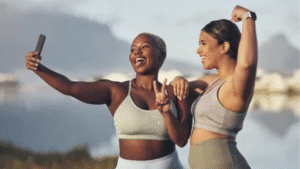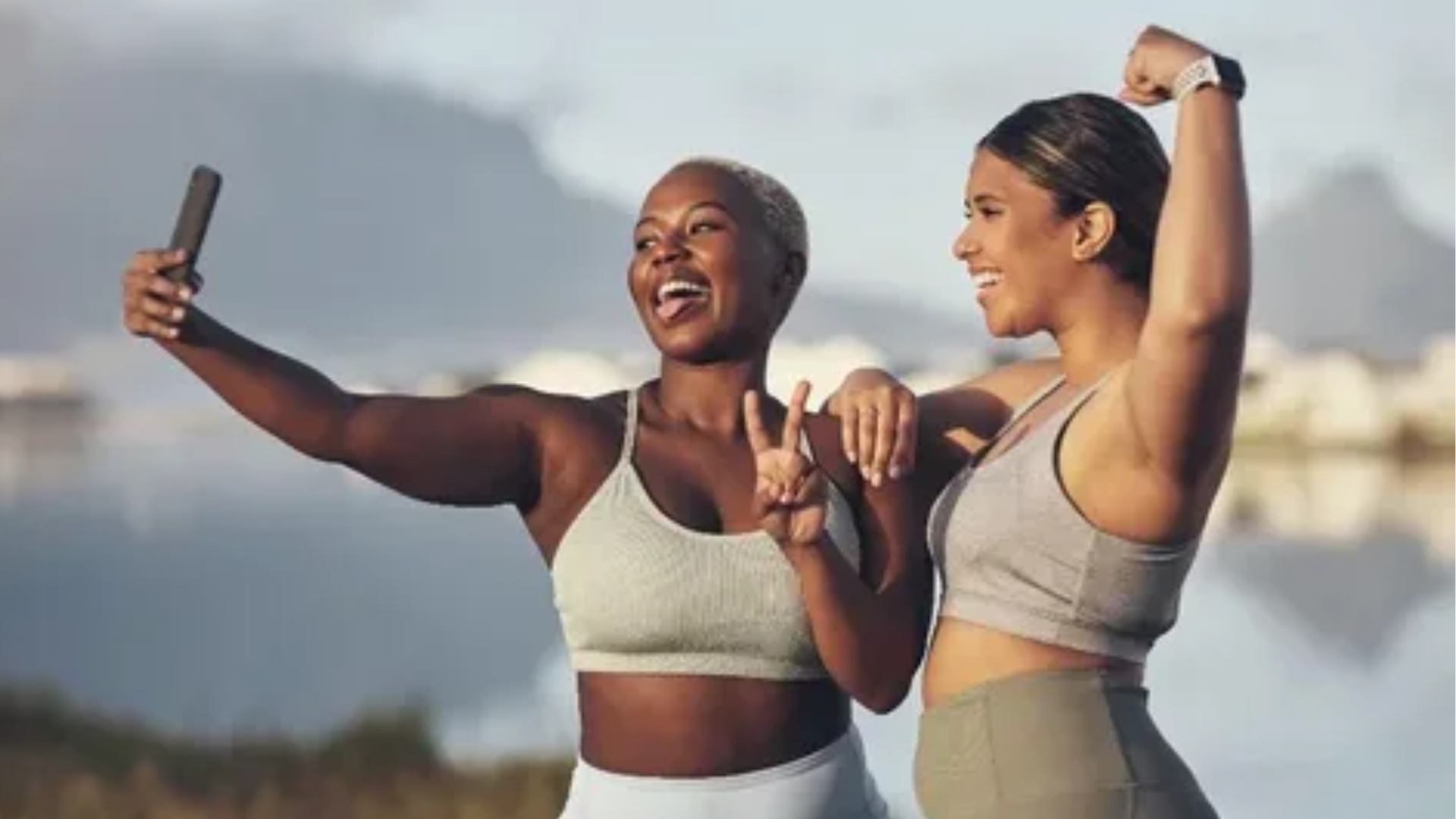Introduction — why 2026 is different (and why you should care)
If the last ten years taught us anything, it’s that fitness keeps reinventing itself like a phone that also judges your posture. In 2026 the game is less about “can I do 100 burpees?” and more about “can my watch stop nagging me while actually helping me recover?” This year is about intelligence (in devices and services), efficiency (shorter workouts that actually work), and quieter goals — longevity, mental fitness, and sustainability. Below are the top 10 trends you’ll want to understand (and use) whether you’re a coach, a content creator, or someone who wants to feel better in their jeans.
1. Wearable Technology: smarter, not just flashier
Wearables are no longer novelty bling. Smartwatches, rings, and sensor-embedded clothes now feed continuous data about heart rate variability, sleep stages, oxygen saturation, and movement quality. The emphasis in 2026 is on teaching people how to use that data — not just collecting a million sleep graphs.
Why this matters: Almost half of U.S. adults now own a fitness tracker or smartwatch, and industry leaders identify wearables as a top trend for 2026. Fitness pros are shifting from “look at your steps” to “here’s how to change your training based on your recovery score.” ACSM
Practical tip: Use wearables to monitor recovery trends (e.g., HRV) and schedule hard sessions when the device shows you’re primed — don’t just race your friend in step counts.
2. Hyper-personalized (AI + data) fitness & nutrition
General plans are getting the boot. With advances in AI, apps can analyze your workout history, sleep, stress markers, and even diet logs to create daily plans that actually fit your life (and your energy that day). Big app companies and device makers are rolling out AI coaches that talk to you like a smart, slightly pushy friend. For example, major wearable brands are adding AI features and subscription tiers to give personalized insights. The Verge+1
Why this matters: Personalization improves adherence. If your plan recognizes that you had a stressful night and substitutes heavy lifting with mobility and breathing, you’ll be more likely to stick with fitness long term.
Practical tip: Try one AI-guided plan for 6–8 weeks. Track whether it feels more doable than one-size-fits-all programs.
3. Virtual, AR & VR fitness experiences
Immersive fitness is growing fast. VR games that burn calories, AR classes that overlay coaching cues on your screen, and fully online studios make great workouts accessible at home — and more fun than stale treadmill dread. Market forecasts show huge expansion in virtual fitness platforms and software — this is a growth area, not a fad. Allied Market Research+1
Why this matters: It lowers barriers (no commute, no childcare issues) and makes workouts social and gamified in new ways.
Practical tip: If you teach or create content, offer hybrid options: in-studio classes and streamed/VR-friendly versions. If you train solo, try one VR class — many users report higher motivation when the workout feels like a game.
4. Recovery-as-training: sleep, tech and regeneration
Recovery is being treated as seriously as workouts. Tools and services — from sleep coaching within apps to infrared saunas and compression therapy — are marketed as performance enhancers. The industry recognizes that progress comes not only from stimulus but from how well you recover after it. Research and market reports show companies invest more in recovery tech and programs. Smart Health Clubs+1
Why this matters: Better recovery reduces injury risk, improves consistency, and makes training sustainable.
Practical tip: Build one extra recovery habit into your week (e.g., 30 minutes of prioritized sleep, contrast showers, or a guided breathwork session) and watch your workouts feel easier.
5. Mental fitness — emotional health as core training
Mental fitness — stress resilience, focus, mood stability — is treated like a performance metric. Apps and classes now pair breathwork, CBT-style tools, and mindful movement into fitness offerings. Industry reports and wellness surveys show mental wellbeing as a major driver of what consumers want from fitness. McKinsey & Company
Why this matters: Training the mind improves consistency, lowers cortisol, and often makes physical changes come faster.
Practical tip: Add 10 minutes of mental training (guided breathing + a short reflection) after two workouts per week. Call it “cooldown for your brain.”
6. Fitness for older adults & longevity practices
Programs focused on mobility, bone health, balance, and longevity are climbing the ranks. As populations age, the market for older-adult fitness is growing; the ACSM trends highlight programs for older adults in their 2026 findings. Strength and balance training aimed at keeping people independent is now a mainstream offering. ACSM
Why this matters: Longevity practices are not niche — they’re mainstream prevention. Working on mobility and resistance training pays off for decades of quality life.
Practical tip: If you’re a trainer, learn simple gait, balance, and fall-prevention progressions. If you’re a consumer, focus on strength + balance twice a week.
7. Micro-workouts and time-efficient training
Short workouts that fit into busy days are here to stay. Think 10–20 minute high-impact sessions that combine strength and cardio or daily movement snacks. People prefer frequent, short wins over long, occasional sessions — and apps are built to support that habit pattern.
Why this matters: Consistency > duration. Ten minutes done daily beats an hour once a week for most long-term results.
Practical tip: Build a “5×10” routine — five exercises, 10 minutes total. Do it on work breaks or between meetings. Keep the intensity honest but the barrier tiny.
8. Holistic, hybrid gyms & “phygital” fitness
In 2026 gyms are blending physical and digital: connected equipment, on-demand classes, and social leaderboards inside the gym. The term “phygital” (physical + digital) describes spaces where you can move seamlessly between IRL coaching and app-based guidance.
Why this matters: Members want choice. Hybrid models increase retention because you can work out at home or drop into a class and keep your progress synced.
Practical tip: If you manage a facility, offer a combined membership with both in-person perks and a simple app for daily check-ins.
9. Sustainable, low-waste fitness and eco-wellness
Consumers care about the planet — and they want fitness options that reflect that. From eco-friendly activewear to gyms that save water and energy, sustainability is part of brand value. Health products and studios promising ethical sourcing, low-waste packaging, and longer-lasting gear get more attention than “fast fashion” fitness trends. Industry insights show sustainability is influencing wellness purchases. StartUs Insights+1
Why this matters: It’s a values play — people want to feel good about their choices, and sustainable products help with that.
Practical tip: Buy fewer, higher-quality pieces, and support gyms with clear sustainability policies. If you sell fitness products, highlight materials and lifecycle.
10. Community & social fitness — from local to global
Human beings are social — group classes, micro-communities on apps, and neighborhood fitness meetups are thriving. The stickiness of fitness programs often depends on social ties — those little group chats and Saturday runs keep people accountable.
Why this matters: People quit less when someone is waiting for them. Social accountability + shared goals = habit permanence.
Practical tip: Create or join a small accountability group (4–6 people) that meets weekly — physical or virtual. Keep it fun and low pressure.
Short table: Trend → Practical Action (one glance cheat-sheet)
| Trend | Quick Action You Can Do This Month |
|---|---|
| Wearables | Check your device’s recovery metric and plan one recovery day when it’s low. ACSM |
| AI Personalization | Try an AI-guided workout plan or use an app that adjusts difficulty daily. WIRED |
| VR/AR Fitness | Do one VR class or AR form drill for variety. Allied Market Research |
| Recovery | Add one extra hour of sleep or a guided recovery session per week. Smart Health Clubs |
| Mental Fitness | Add a 10-minute breathing or reflection routine after workouts. McKinsey & Company |
| Older Adult Focus | Add balance and resistance training 2×/week. ACSM |
| Micro-workouts | Create a 10-minute daily circuit. |
| Phygital Gyms | Try a hybrid gym membership or integrate app check-ins. |
| Sustainability | Buy one higher-quality, eco-friendly fitness item. StartUs Insights |
| Community | Start/join a 4–6 person accountability group. |

How to put the top 3 trends together (a quick week sample)
Day 1: 20-minute AI-guided strength session (follow your wearable’s readiness score).
Day 2: 10-minute micro HIIT + 10-minute guided breathwork.
Day 3: Recovery — sleep focus + mobility (use wearable sleep feedback).
Day 4: VR cycling or immersive class for 30 minutes.
Day 5: Strength (older-adult style: slow, controlled, balance).
Day 6: Community class or local walk + reflection.
Day 7: Active rest (yoga, stretching).
This combines wearables, AI personalization, recovery, VR options, and community — a tidy 2026 recipe.
Risks, caveats and what to watch for
-
Privacy: More data means more responsibility. Read privacy policies before you upload intimate health data to any app or wearable. (AI features often live behind subscriptions too.) WIRED
-
Over-optimization: Don’t let data paralyze you. Use trends to improve action, not to obsess over tiny metrics.
-
Inequality of access: High-tech trends can widen gaps if low-cost options aren’t available — support community programs that keep fitness accessible.
-
Hype cycles: VR and some recovery tech will give great early returns for enthusiasts but may not suit everyone. Try before you buy big.
Closing — your 2026 cheat code
Master two things for 2026: use data intelligently, and structure fitness around life, not the other way around. Wearables, AI, and immersive tech are powerful, but the real win is combining them with recovery, mental fitness, and social support so you keep doing the thing for years. Start small: one AI-guided plan, one micro-workout, one recovery habit — repeat. That’s how big changes sneak up on you.
Sources (selected, load-bearing):
-
ACSM — The Future of Fitness: ACSM Announces Top Trends for 2026 (ACSM’s survey highlights wearables and programs for older adults as leading trends). ACSM+1
-
McKinsey — Future of Wellness (consumer demand driving wellness subcategories, mental health and personalization). McKinsey & Company
-
Allied Market Research — Virtual/online fitness market growth projections (large projected growth for virtual fitness platforms). Allied Market Research
-
The Verge / Garmin & Wired — news on wearables adding AI/subscription features (examples of industry shifts toward AI personalization). The Verge+1
-
Women’s Health / SFIA data — modality growth (e.g., Pilates growth) and participation insights. Women’s Health



